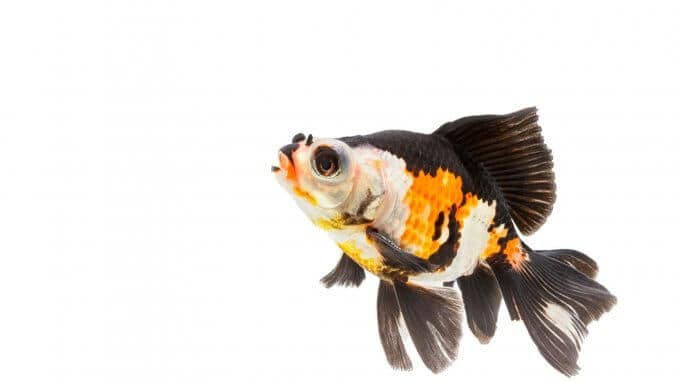
Goldfish are the classic example of keeping fish in the home, but lots of people don’t realize the wide variety available.
Fancy goldfish are a group of unique varieties that offer a glamorous look to your aquarium. They each have their own selling point, from a pair of fluid-filled sacs to a quadruple tail fin.
Most people should be able to look after them as they don’t have any special requirements. You just need to make sure you keep their tank clean.
They’re peaceful creatures that won’t cause an issue with other fish in the tank, and their omnivorous diet makes them easy to feed.
This article will cover everything you need to know about fancy goldfish including how to care for them, types, what to feed them, and much more…
TABLE OF CONTENTS
Fancy Goldfish Facts & Overview
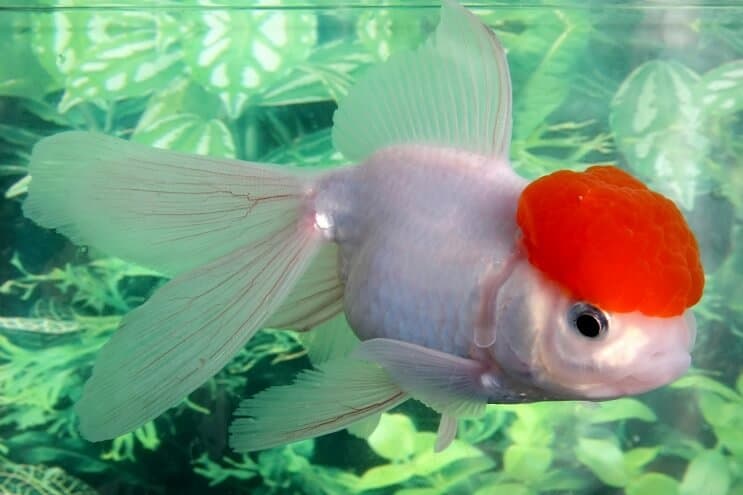
| Category | Rating |
| Care Level: | Easy to medium |
| Temperament: | Peaceful |
| Color Form: | Various |
| Lifespan: | 5-10 years |
| Size: | 6 inches |
| Diet: | Omnivore |
| Family: | Cyprinidae |
| Minimum Tank Size: | 20 gallons |
| Tank Set-Up: | Freshwater, cold, planted |
| Compatibility: | Peaceful cold-water species |
All goldfish (Carassius auratus) are freshwater fish from the Cyprinidae family and originate from East Asia, where they were selectively bred to produce lots of different types. They’re closely related to carp which tend to be much bigger.
You can usually identify them by their double fins and egg-shaped body, but it’s not always that easy. Though they’re all the same species, there are lots of varieties that come in different shapes and sizes.
It’s this variety that attracts most people to them because you can pick your own personal favorite. They look different to most other fish, so they get chosen over the less distinctive slim-bodied goldfish varieties.
They’re peaceful and slow-swimming so you don’t need to worry about your other fish, you only need to consider if their tank mates are aggressive enough to attack them.
If you’re going to get some fancies, you need to be prepared to regularly clean the tank to help prevent illnesses.
This shouldn’t be too difficult, but it might be more time and effort than a beginner would want to give up and could lead to mistakes. Once you’ve added them to your tank they should live for around 5-10 years; it depends on the type and the individual. The type will also determine color, shape, and sizes; though 5-6 inches is most common.
Each fish costs roughly $5, but this can triple for more exotic types and colors. Most fish stores sell a few types of fancy goldfish, but you may have to look around a while if you’re looking for a specific kind.
Typical Behavior
Fancies are generally peaceful and calm animals that spend most of their time swimming around the middle levels of the tank.
They’re slow swimmers so they can’t really chase other fish or escape from them. That’s why you shouldn’t keep these fish with aggressive species because they can’t get away.
Two times get fancies particularly active are during courting and feeding. During courting a male will put on a show to impress the females, and at feeding times they’ll all want to get the food before anyone else.
Types and Appearance
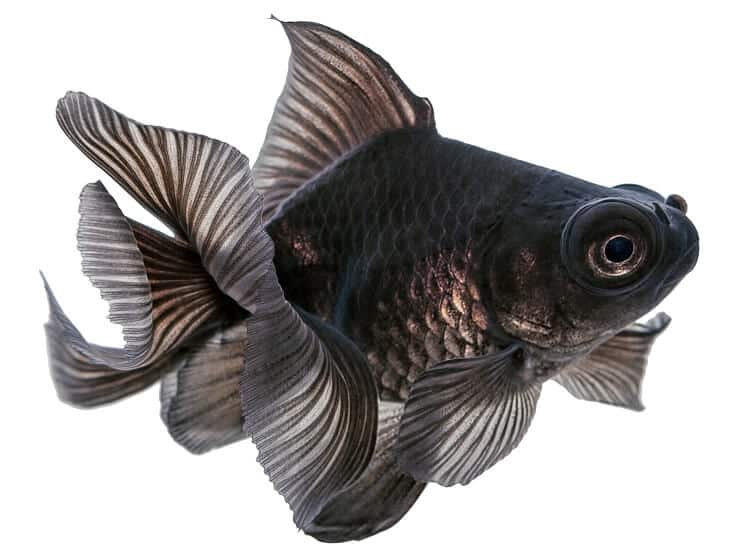
The main differences that separate fancy goldfish from other types are the egg-shaped body and the double tail/anal fins. They’re usually a few inches shorter as well, making it easier for people to keep them at home.
There are many varieties, here are some of the most popular:
Blackmoor Goldfish
Blackmoor goldfish, or black telescopes, are completely black with sets of double fins that show off why they deserve fancy status. Their main feature is their telescope eyes, these are round eyes that protrude on each side of the 4 inch body. Surprisingly, blackmoors actually have terrible eyesight.
Sometimes you can find other varieties of telescope goldfish that have different colorations.
Bubble Eye Goldfish
Bubble eye goldfish have a unique look. Their eyes point upwards and sit next to two “bubbles”. These are delicate fluid-filled sacs that can become infected if punctured. These fish are usually orange and white in color and grow up to 4 inches.
Fantail Goldfish
Fantails are known for their quadruple caudal fin, a set of four fins at the rear of their egg-shaped body. This is another species that’s typically orange and white. In an aquarium, they will grow up to 6 inches long.
Veiltail Goldfish
Veiltail goldfish are well-known for their bright colors, gracious movements, and long, flowing fins. They are one of the rarest and most expensive types of fancy goldfish. Veiltails typically live 10–20 years and grow up to six inches in length.
Lionhead Goldfish
Lionhead goldfish have fins that aren’t quite as extravagant as other varieties, but they make up for this with a distinctive “hood”. The hood is a growth on the head that covers the cheeks and gill plates. The colors available vary between orange, white, and gold. They will grow to around 5 inches.
They are sometimes mistaken for the oranda goldfish which has a hood too, but this fish will grow up to 12 inches.
Pearlscale Goldfish
Pearlscale goldfish fish have round, almost spherical, bodies that are covered in domed scales. The scales are usually white and contrast an orange body which creates an intriguing pattern. When fully grown they reach 8 inches.
Wakin Goldfish
You’re more likely to find wakin goldfish in a pond rather than an aquarium due to their hardy nature. They have a double fin at the end of a slender body. Some individuals have grown to 18 inches, but 10 inches tends to be the average. They display the classic orange and white colors.
Habitat and Tank Conditions
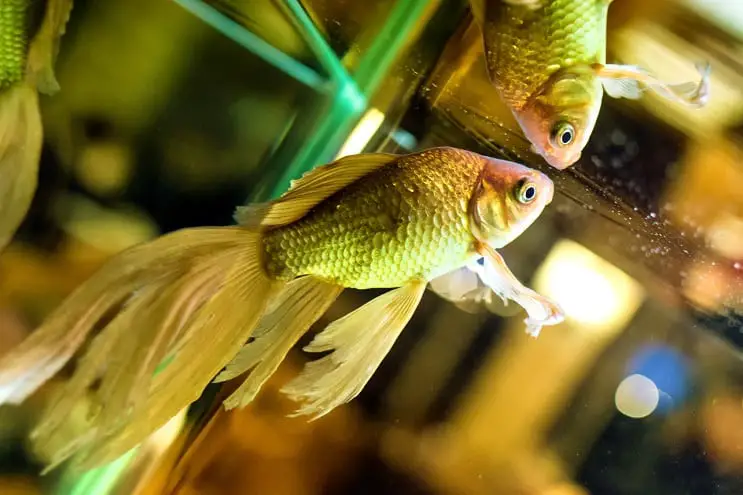
Goldfish are a domesticated and selectively bred fish, so we’ll take a look at the environment their close relatives (Carps) live in.
Carps live in slightly murky water in the wild with plenty of free floating plants and a dirt bottom to the river bed. They live in still to slow moving bodies of waters such as lakes, rivers, canals and reservoirs which have a water temperature between 42 and 82°F.
It’s important to recreate the same conditions in your tank to keep your fish happy and healthy; it isn’t be hard to replicate.
Some people keep their fancy goldfish in a pond rather than an aquarium. Pond water isn’t usually as clean, which is a big problem for fancies since they’re prone to disease.
Ponds are better suited for larger varieties such as comet goldfish.
Tank Conditions
You’re going to need a big tank for your fancy goldfish, especially if you want a few. You’ll need 20 gallons of water per fish; those over 8 inches need even more space.
Deciding which size tank to get isn’t easy, you need to make sure your goldfish have enough room so they can swim around in the middle of the tank. If the tank is too small, then their growth could be stunted. The minimum tank size you can house one fancy goldfish in is 20 gallons.
In films and on TV a lot of goldfish are shown in glass bowls. Copying this isn’t a good idea because the fish will quickly outgrow the tank. Once you have your tank you need to fill it with substrate, decorations and plants. You can use fine gravel or sand to layer the bottom of the tank.
Plants are particularly important as they keep the water cleaner and oxygenated. They provide hiding spots too, giving fish some safe areas to go to if they’re being harassed.
Every now and then fancies may nibble at the plants; this won’t cause much damage and gives them an alternative food source. Most plants can be used but common examples include anacharis, hornwort, and java fern.
As a cold-water species, goldfish don’t need a heater in the tank unless the water remains below the ideal range of 50-75°F. This also means that you should keep the tank away from external heat sources like radiators.
A filter is the only piece of equipment you need in the tank. It’s worth investing in a good one to prevent disease. Some people choose to add an air pump for water movement and oxygenation.
The pH of the water should be kept between 6.5 and 7.5.
Tank Mates
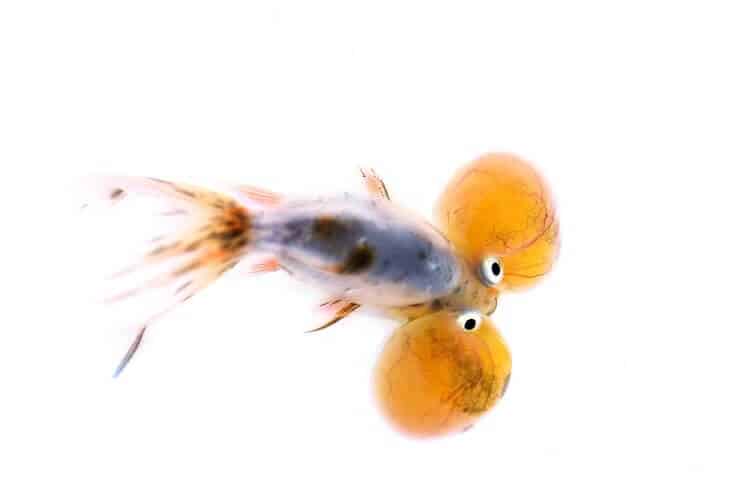
Your choices for tank mates are limited by the fact that goldfish live in cold waters. You won’t be able to add most other popular freshwater fish that enjoy tropical waters.
Any tank mates should be large enough not to be eaten, should not be nippy and should thrive in the same tank temperature as your goldfish.
Ideal tank mates include:
You could also house your goldfish with non-fish inhabitants. Certain shrimp (like ghost shrimp) and snail species (like nerite snails) can be added.
Keeping Fancy Goldfish Together
Your fancies are best kept with their own kind or other peaceful goldfish. They’re slow swimmers so they can’t make a quick escape when being pestered by other fish.
Lots of varieties have long, trailing fins which make them a target for any notorious fin-nippers, which are best avoided.
Don’t overstock the tank as fancy goldfish are particularly messy – they can eat a lot. 20 gallons per individual is recommended.
Diet
Fancy goldfish are omnivores so there’s a lot of choice at feeding time. As an ornamental variety of carp, they share a similar diet.
In the wild this would be insects, tadpoles and small bits of vegetation. It’s best to give them a varied diet to replicate this and provide a range of nutrients. They can be fed store-bought flake and pellet foods, but there are some better options if you can afford them (such as moist foods). Frozen and live foods are some good examples, as well as plant matter.
Feed them frozen or live pieces of meat such as daphnia, bloodworms and brine shrimp. If you buy these they usually come in ice cube sized blocks which you can shave chunks off to feed to your goldfish.
Fancies are particularly prone to diseases (which will be discussed later). Moist foods help to keep things moving through their body to avoid constipation. They might be a little more expensive but they’re worth investing in to improve the health of your fish in the long run.
A cheaper solution to reduce constipation is through green vegetables like lettuce, spinach and broccoli. You can add them to your tank raw and they’ll slowly be nibbled by your fish. The high levels of fiber they contain help to prevent blockages.
Try to feed them twice a day, and only an amount that they can eat in a couple of minutes.
Care
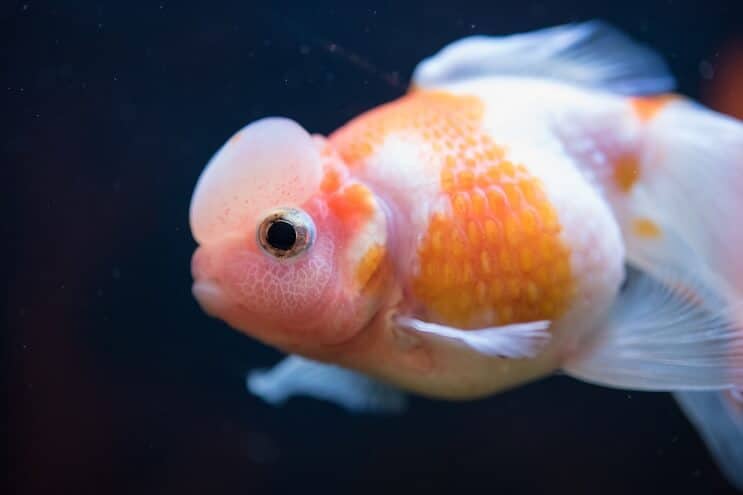
Fancy goldfish are easy to look after, providing the tank is kept clean.
The biggest issue with these fish is that they have the same sized organs as slimmer goldfish, so their organs are bunched tightly together. With everything squashed together, the chance of disease goes up. Some of the most common are swim bladder disorders and liver disease.
Swim bladder problems are easy to spot, the fish will be floating at the top of the tank or sitting at the bottom. The best way to tackle this is by not feeding them for 24 hours, then giving them foods that contain more fiber (vegetables and frozen foods).
Liver diseases don’t show many symptoms, so they can be particularly fatal. To avoid them making sure you are adding quality, nutritional foods to the tank.
Skin diseases can be a big problem for fancies and other ornamental fish. They’re caused by lots of different things (such as parasites or bacteria) and cause lots of symptoms. The symptoms depend on the disease but most skin problems cause spots or color changes around the body. There are lots of medications available that can be added to the tank to treat them.
All fish need clean water, but it’s particularly important for these fish since they are already prone to illnesses. Weekly water changes are vital to keep pollutants low.
High quality moist foods can help to prevent constipation, which can lead to bigger problems. The moisture in the food makes it easier for it to pass through the body for processing.
Some varieties (like the blackmoor) will eat a lot which ultimately makes a mess in the tank. This is another reason to clean the tank regularly.
Breeding
Breeding these fish isn’t too much of a struggle if they’re comfortable in the aquarium. It’s helpful to know how they mate when trying to get them to breed.
Naturally they reproduce in the spring, but you can move this forward by gradually raising the temperature of the water to 65°F.
Goldfish are egg layers. The females produce eggs and attaches them to a surface, the male is then free to fertilize them.
If you want to breed fancies, you’ll need a specialist breeding tank. After spawning the parents start eating the eggs so they will have to be quickly separated. A spawning mop can make it easier to move the eggs.
The fry will need small foods until they grow bigger. You can buy foods made specifically for fry if you’re not sure what they can and can’t eat.
At around 1 inch long the fry can be added into your main tank with the adults.
Are Fancy Goldfish Suitable for your Aquarium?
As long as you’re not hoping to add them to a tropical set up, fancy goldfish are suitable for anyone.
The most important thing is providing them with a large enough tank.
If you’re willing to put in some extra time when keeping the tank clean, they will be an excellent addition to your home.
Which fancy goldfish have you kept? Let us know in the comments section below…

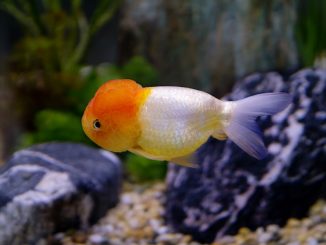
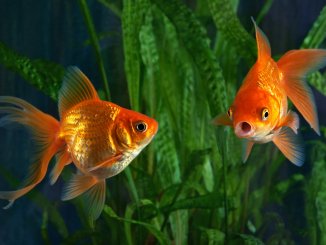

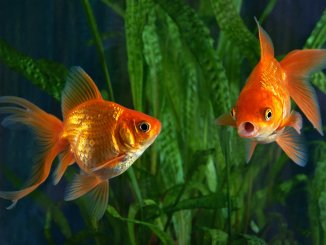
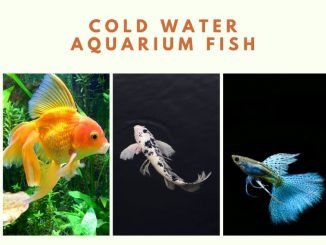
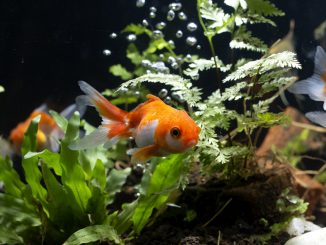
Thank you. I enjoyed the article. I would like to see more on the goldfish and potential tank mates.
Hi Michael, thanks for your feedback. I’ll be writing more articles on Goldfish in the next few months. Thanks, Robert
I started a fancy goldfish tank over a year ago. 55 gallon, have 1 fantail, 1 sarasas plus cory cat and plexco. Only challenge is the smell the tank has. Suggestions?
Hi Dawn, overly smelly water usually has a cause. Either overstocking, overfeeding or not enough maintenance. The tank certainly isn’t overstocked, so is it possible it’s one of the other two? You should be carrying out water changes every two weeks along with regular maintenance tasks. The amount of food you feed them should be finished within two minutes. Thanks, Robert
Hi Robert, I have 4 Fancy’s Blackmore,pomPom
I have a Black Moore 8″ a PomPom 4″, an Organda 6″,and a Common Fancy 8″(these measurements are from head to tip of tail) They live in a 100 gal tank. The have a cylinder filtration system in a natural set-up. My question is, how often for water changes and is that full water changes or at what percentage?